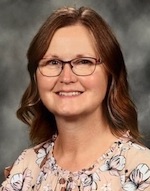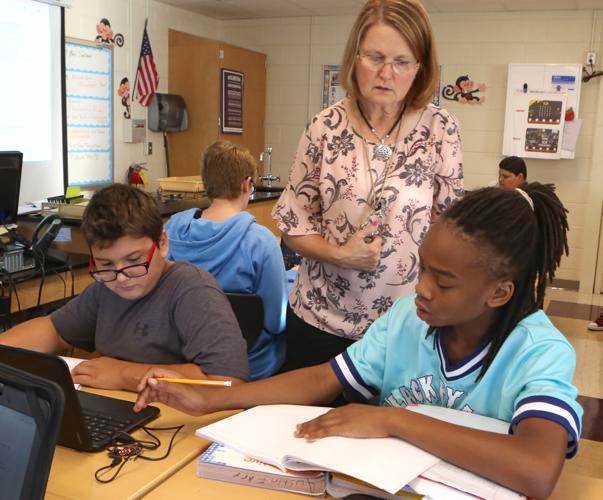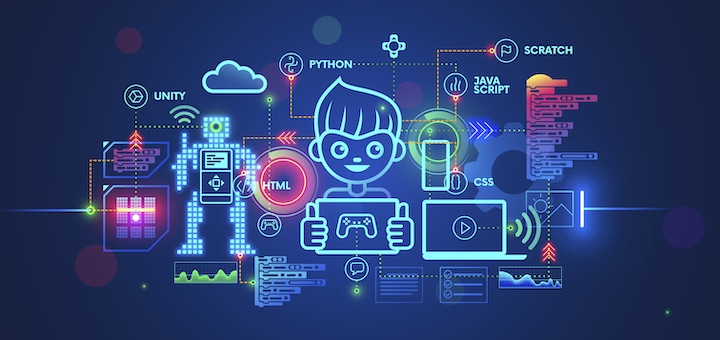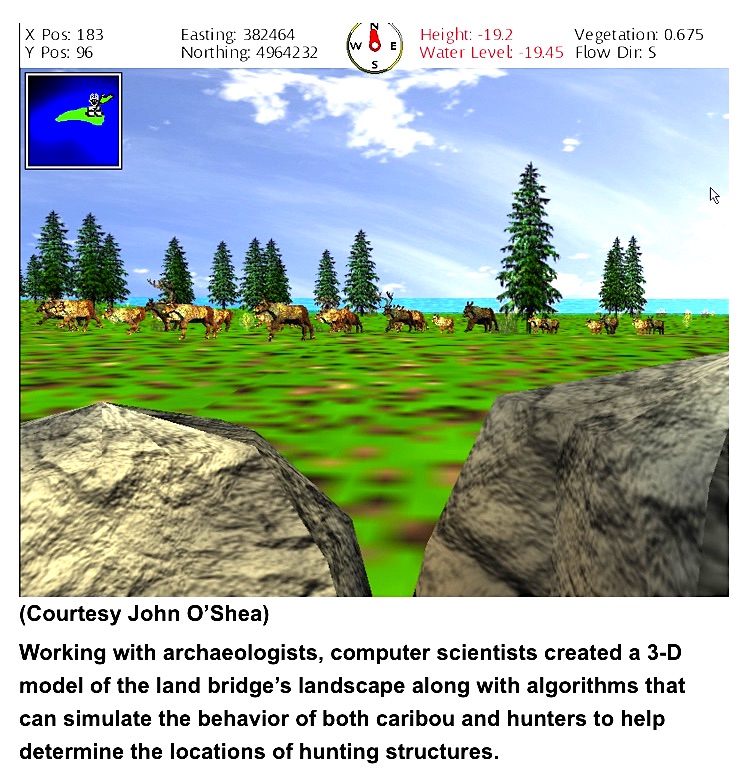Why Computer Science Counts in Middle School
By Crystal Kistler

Our middle school offers a variety of career pathways and cluster electives for students to participate in. Here’s how I help my students prepare for their futures in my computer science classroom.
Coding Is Relevant for Everyone
Not all of my students will go to college – many of them will go straight into careers. They will all need skills to make themselves marketable. Since computers and software are ubiquitous these days, high school graduates who understand a bit about coding will be more qualified, even for positions that don’t actually require coding knowledge.
The typical computer program is very literal, and the device coded does not know what the person coding is thinking to fill in any missing gaps. Steps in computer coding need to be in a sequential order, so learning to code helps students think logically and chronologically.
Whether they go to college or not, many of my students will end up in jobs that don’t even have descriptions yet. I can’t tell them what it will be like to do a job I haven’t imagined, but I can help them understand the skills that are likely to be used in those jobs.
Technology evolves, and the skills required to work with it may shift a bit. Unless there is a revolutionary paradigm shift in computer science, however, giving students the skills that are relevant today means they will have prior knowledge to serve as a foundation for whatever future learning is required of them.
How Computer Science Teaches Underlying Skills
The truth is, even if we don’t know what all the jobs of the future will be, most of the core skills required to do them won’t change. People need to problem-solve and think critically, no matter what their job is.
Most of us may not need to be experts on the engineering design process, but understanding how to identify a problem, come up with potential solutions, and then engage in some trial and error to see what works is going to be helpful in most people’s lives.

In one of my classes, students work with a partner in creating a security type of device or wearable technology to keep a person safe. Before beginning the project, students are to create a sketch with a written-out plan for what their device will do, when it will do it, and what will make the device do it.
Students work independently at first, then they can bring their ideas to their partner and they discuss whether their designs will work or not. Teamwork and collaboration is key. Oftentimes, student pairs will combine ideas they had individually and create a project that truly integrates both of their creativity.
That kind of frequent collaboration also tends to develop better communication skills, which are also universally helpful. Sometimes at the beginning of the semester, I find myself getting frustrated with students because when they run into challenges, they simply say, “It’s not working.”
As they spend time in class working with me and their peers, they become a lot more descriptive. I don’t have to ask them, “What’s the ‘it’ that’s not working?” because they’ve already said to a classmate, “My column isn’t lining up like yours,” or “my LED is not flashing like yours.”
My students are building a website in one of my classes, using their collaborative software-building platform (we use Replit), in which they have more than 100 lines of code.
Just the other day a student said to me, “Oh my gosh! I missed one angle bracket and now the whole thing won’t work.” Every one of them learns to pay close attention to detail if they want their code to work. Their faces are priceless with relief when they have been struggling and realize they missed a semicolon!
Students certainly practice skills like teamwork, problem-solving, and attention to detail in any class, but in a computer science classroom where they’re building things, testing out possibilities, and reiterating after trials, it just happens naturally and constantly.
Another way that the website project helps prepare students for the professional world is that it teaches about data privacy. The Replits they use are public, which means that when someone puts their address, phone number, or other identifying information in, it’s visible to anyone! I make sure to point out to them how easy it is for people to find their personal information if they aren’t careful with it.
Computer Science in Surprising Careers
Computer science is a great way to explore familiar careers and even put them into a new perspective for students. The curriculum I use (Codelicious) has lessons that focus on various careers with science and STEM connections and how those careers incorporate computer science.
We’ve looked at the job of website designer and talked about how they create the user experience by taking into account things like users who are colorblind. We’ve compared the job of a CAD designer with that of a 3D printing technologist.
But my favorite career connections are the ones that I wouldn’t expect to involve much computer science. When we looked at personal trainers, for example, students had to make a fitness plan. They got excited when they realized that they could track so much more than steps with a full-featured fitness tracker.
When we looked at underwater archaeologists, they learned about scientists creating a video game to see how animals would have migrated across Lake Michigan when it still had a land bridge. Who would’ve thought archaeologists would be designing video games? (Source)
Building a Broad Knowledge Base
We may not know all the professions that will eventually be available to students who are in middle school today. Even if we did know, most of those students couldn’t tell you which ones they’ll eventually want to pursue. Core skills stay the same, however, and a broad base of knowledge will prepare people to pursue the special skills needed for any job. In today’s world, computer science is one of those core skills – and an excellent way to prepare students for flexible futures.
Crystal Kistler teaches 7th and 8th grade science and computer science at Hobart Middle School in Hobart, Indiana and has written for SmartBrief Education and other publications. She can be reached at kistlerclass@hobart.k12.in.us.




































Top-notch article, Crystal! The technology approach you describe seamlessly meshes with STEM projects and builds valuable life skills – teamwork, collaboration, and problem-solving. GREAT work!
I’m a student and I learned that computer science class is a great way to explore careers.